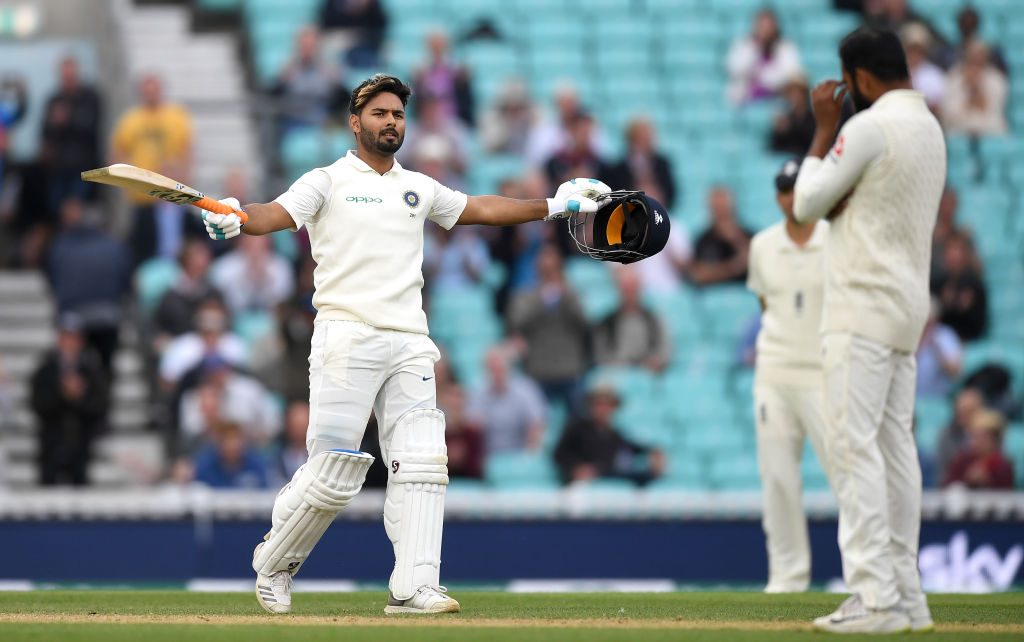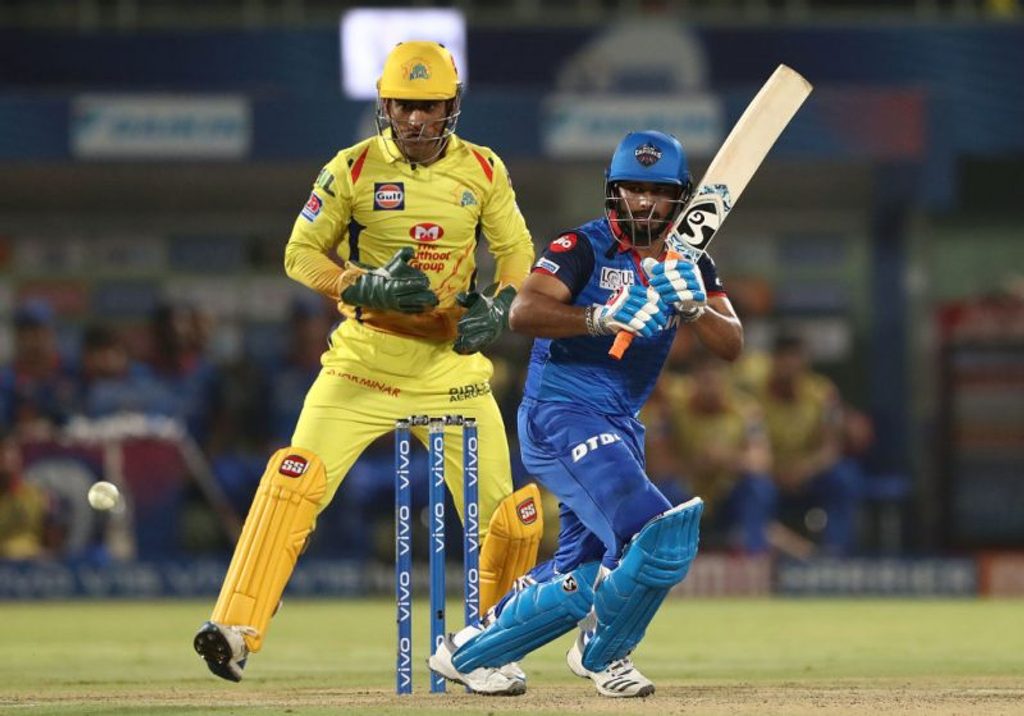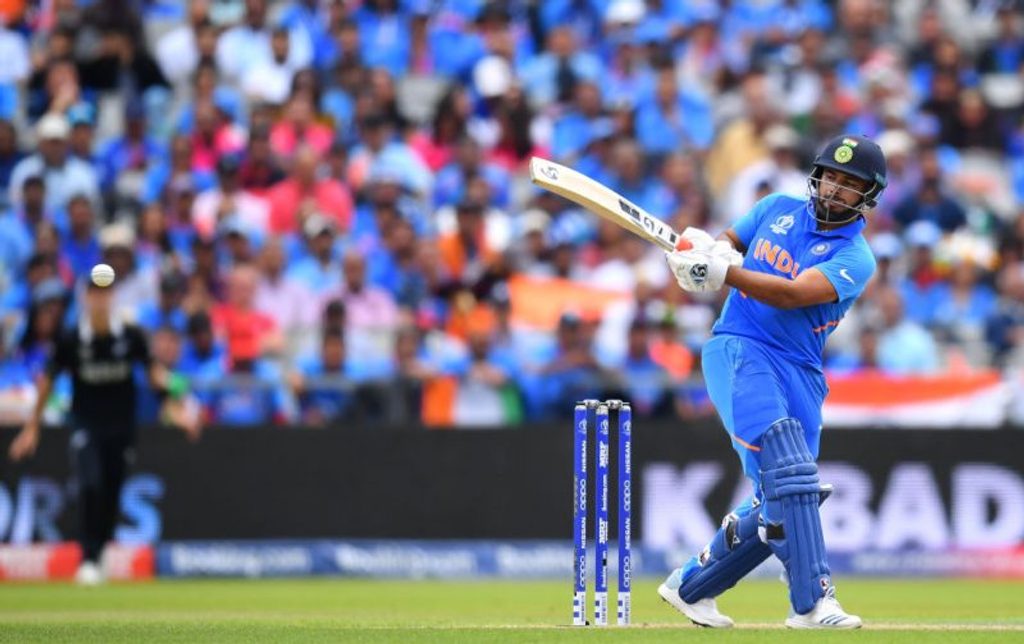
The mismanagement of Rishbah Pant by the India think tank must be addressed quickly, writes Akshay Gopalakrishnan.
In August 2018, Rishabh Pant became India’s 291st Test cricketer, having arrived as a volatile 20-year-old with exhaustive reserves of talent. Since then, his international career has been just like his game: unpredictable.
In the latest turn that his career has taken, Pant now finds himself out of India’s XI for the first Test against South Africa, which starts on Wednesday, October 2. It raises further questions yet on how team management views the Delhi wicket-keeper. Do they want to preserve him for next year’s T20 World Cup? Do they want him to focus only on white-ball cricket until then? Not all players can switch seamlessly between formats, after all, and it’s certainly a tougher ask from a 21-year-old who hasn’t yet fully matured.
 Rishabh Pant averages 44.35 with the bat in Test cricket
Rishabh Pant averages 44.35 with the bat in Test cricket
With players of Pant’s ilk, one thing is for certain. On their good day, they can turn the world on its head. But it’s neither reasonable nor practical to expect those moments on a consistent basis. These are players whose games are as much flash as they are fire. For every forward defensive, you can sense that a quick trip down the ground is imminent, with a long-off or deep midwicket lurking, warming their hands in anticipation. Just go back and see Rohit Sharma’s dismissals against South Africa in the Delhi Test of 2015, and against Australia in the Adelaide Test last December. While vastly different players from a technical and aesthetic sense, these are fluid stroke-makers whose license to express never quite runs out. With them, bowlers always have a chance of winning the patience game.
And while it’s unfair to reduce their Test credentials to such outlier moments, it’s reasonable to assume that such moments make up a larger portion of their game than in that of your average Test batsman. Even the very best, like Virender Sehwag, with all the triple-hundred manifestations of his genius, could never escape the ignominy of some outrageous dismissals. Which is why it’s even more imperative that management shows patience with players like Pant. But it’s a virtue that’s been practically absent during the Virat Kohli regime.
Besides, statistically, there isn’t much of a case to be made for Pant to be dumped from India’s Test XI. In 11 Tests, he has accumulated 754 runs at an average of 44.35. Of all of India’s batsmen to have played in 11 or fewer games in the middle order (Nos. 4 to 7), Pant’s run tally is the highest. He passes fifty once every 4.5 innings, which is a significant feat for a player who has only batted at Nos. 6 and 7. And he already has Test hundreds in England and Australia.
Among those Indian batsmen who played seven or more Tests during India’s last cycle of overseas tours, across South Africa, England and Australia, Pant’s average of 42.66 was behind only those of Cheteshwar Pujara and Virat Kohli.
 Pant in action for Delhi Capitals at the 2019 IPL
Pant in action for Delhi Capitals at the 2019 IPL
And yet, he was named in neither India’s World Cup squad nor in their list of stand-bys for the tournament. He responded to the snub by slugging 488 runs at 37.53 for Delhi Daredevils in the 2019 Indian Premier League, striking them at 162.66, before finding himself, out of the blue, flown into the World Cup contingent as cover for the injured Shikhar Dhawan. Not just that, he was also given the significant responsibility of batting at No.4 in a world tournament, despite having batted there just once previously. Unfair treatment? Probably. Unreasonable expectations? Most certainly.
Despite the circumstances, Pant gave a good account of himself at the tournament, with scores of 32, 48, 4 and 32. After the last of those knocks, which came in India’s semi-final defeat to New Zealand, where he briefly steadied the ship after a top-order capitulation, Kohli, reflecting on another reckless end to a promising innings, said: “He is an instinctive player and did well to overcome that situation. I think the way they played after the loss of four wickets was quite commendable. And in hindsight, he’s still young. I made many errors when I was young in my career and he will learn, he will look back and think, yes, he could have chosen a different option in that situation, and he realises that already.
“All these guys have a lot of pride and passion to play for their country, and they are the ones who feel the most disappointed when a mistake happens. On the outside, it looks like it was an error, but the person who makes it, trust me, they are the ones who suffer the most. I’m sure he will reflect on it and he will come out stronger.”
 Pant bats against New Zealand in the semi-final of the 2019 Cricket World Cup
Pant bats against New Zealand in the semi-final of the 2019 Cricket World Cup
And yet, despite the reassuring undertone of those words, it seems as though team management has already started to get a little tetchy with Pant. Admittedly, he did not have the best of series in the Caribbean. But to bring the Test axe down on him following a return of 58 runs in three innings, especially after his phenomenal rookie year, does seem a tad harsh. Coach Ravi Shastri has already called out Pant’s lack of “sensible cricket”.
Now it can always be argued that Wriddhiman Saha’s selection over Pant for the Visakhapatnam Test was made keeping in mind the conditions. It is indisputable, after all, that Saha is the better ‘keeper, especially on turning tracks, which everyone should expect to see in this South Africa series. Kohli himself has stated in the past for his preference to have a ‘keeper first and a batsman next. Saha is highly rated by team management for his old-school technique and supreme efficiency behind the stumps.
Nonetheless, with actions that have contradicted words, what kind of an effect do such moves have on a young player? This is a management that hasn’t had the best track record of coming good on their words. After his five-wicket haul in Sydney earlier this year, Kuldeep Yadav, Shastri proclaimed, would be India’s No.1 overseas spinner. But in the Caribbean, on their very next tour, Kuldeep didn’t even make the XI in any of the Tests.
That Pant is being mismanaged is evident by now. In the last few days alone, Sunil Gavaskar and Yuvraj Singh have had a say on the matter, with Gavaskar asking for Pant to be allowed to settle down in one position – possibly at No.5 in limited-overs cricket – while Yuvraj was a lot stronger with his words, calling for the support staff to understand Pant’s “character” and “psychology”, and warning against “shouting” at him or “suppressing” him.
There is merit to be had in a horses-for-courses selection, no doubt. But it begs the question: how much tinkering is too much? There is only so much that external words of support can do to boost the morale of a player. Eventually, the support needs to come through in actions.
Every cricketer needs to be allowed time to settle down and made to feel at home – some longer than others. That would mean backing them through thick and thin, often for long and frustrating periods. Not long before he played a defining part in India’s maiden Test series win in Australia, Cheteshwar Pujara, for long considered India’s purest Test batsman, was far from a lock in the XI. Setting impossibly high bars could have massive implications and have a ripple effect that will ultimately reflect through on-field performance.
At what point do you start to lose players’ faith and make them insecure? These are questions that the Kohli-Shastri regime has often failed to address in the past. Now, they face those questions again, and the subject of discussion this time is a 21-year-old who is at an impressionable stage and could be greatly impacted by the trust and nurturing he receives from the support staff. It’s a test of inclusivity for Kohli’s India and a chance to show that this is a team that pins utmost faith in its players and will back them to the hilt. Can they start that by making an example out of Pant?








